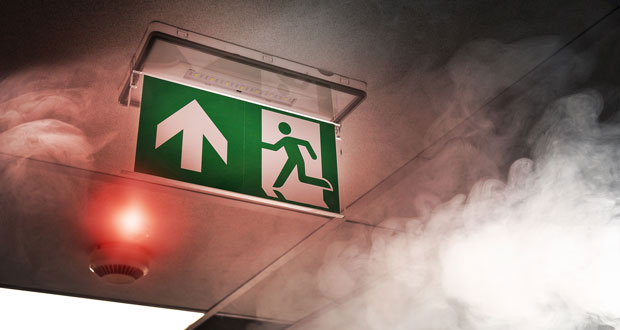With hybrid working becoming the new standard for UK businesses, traditional fire safety protocols are failing to address the new risks posed by flexible workplace arrangements, warns Safety Group UK.
More than a quarter of UK employees have now adopted hybrid working, which means that management in charge of workplace safety is facing unprecedented challenges in fire warden coverage, fire extinguisher-trained employees, evacuation planning, and lone worker protection that existing fire safety frameworks weren’t designed to handle.
The fire safety planning put in place when workers were office-based assumes consistent occupancy levels and therefore, the assigned personnel for carrying out the emergency plan will always be in. However, hybrid working has disrupted these assumptions, creating safety risks that many organisations haven’t yet addressed.
Fire warden coverage becomes unpredictable when key people work flexible schedules. Workplaces may find themselves without enough trained fire wardens, leaving occupants without proper evacuation guidance. This is particularly concerning in larger buildings where fire wardens have specific floor or zone responsibilities.
Evacuation planning requires restructuring for hybrid environments as the traditional headcounts and assembly procedures become unreliable when occupancy changes daily, which could lead to emergency services receiving wrong information about building occupancy, potentially putting lives at risk during rescue operations.
Employees working alone or in small groups face increased dangers, as there may be insufficient people to raise alarms, assist with evacuations, or provide immediate help during emergencies.
Expert recommendations for hybrid fire safety:
- Implement flexible fire warden systems Create rotating fire warden responsibilities based on actual daily attendance rather than fixed roles. Ensure multiple people are trained so you can have a backup network for wardens and have someone present during all operating hours. Consider cross-training employees across different floors or departments to maintain flexibility in coverage. Fire warden e-learning is an easy way to get larger amounts of employees trained. Although face to face training is always preferred.
- Develop real-time occupancy tracking Where possible, install systems that provide accurate, up-to-date information about building occupancy and the location of workers. This could include digital check-in systems, access card tracking, or booking platforms that integrate with fire safety protocols. This then allows the emergency services to have access to reliable occupancy data during incidents. Similar systems were used in the Covid 19 pandemic, so most businesses should be used to them.
- Establish lone worker protection Create specific protocols for employees working alone, including regular check-in procedures, emergency communication systems, and clear guidelines for when lone working isn’t permitted.
- Strengthen communication systems Implement robust communication networks that can reach all workers regardless of their location within the building. This includes visual and audible alarms, digital notification systems, and backup communication methods in case any initial systems fail. Centralised tannoy announcement systems can also work to give the vital direction that might be missed from fire wardens.
- Update fire risk assessments Revise fire risk assessments to address hybrid working arrangements specifically. Consider the implications of reduced occupancy, variable personnel locations, and changed working patterns on fire safety measures. Ensure assessments account for worst-case scenarios in low occupancy situations.
- Provide targeted training Deliver fire safety training that specifically addresses hybrid working challenges. Ensure all employees understand their responsibilities in different working scenarios and know how to respond when normal fire safety procedures may not apply.





